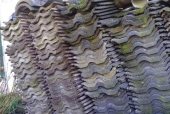


Hope Willis wrote:Anybody got a baking soda alternative? I can't use much of it as we have greywater...this sucks since baking soda is the best cleaner ever! Am trying the no shampoo thing, on week three...it does get better, right???



Satamax Antone wrote:First, check thoses links.
https://permies.com/forums/posts/list/43528#344410
Satamax Antone wrote:And if you want a cheap bell, my opinion is to get either barrels, or square/rectangular metallic tanks, like old home heating fuel tanks, or tractor fuel tanks. And use thoses as single or multiple bells,. Covered with whatever material you can. If protected by a thin sheet of metal inside, even concrete can work well enough. So a whole lot of choice are availlable to you. Stones, bricks, even cheapish ones, you don't need firebricks in that case.

William Bronson wrote: The bell and masonry stove shown use a lot of fire brick to line their insides. To me, that is where cob might be a useful choice, as a lining.
William Bronson wrote: The woodfired oven enthusiasts have a lot to say about materials and heat.

